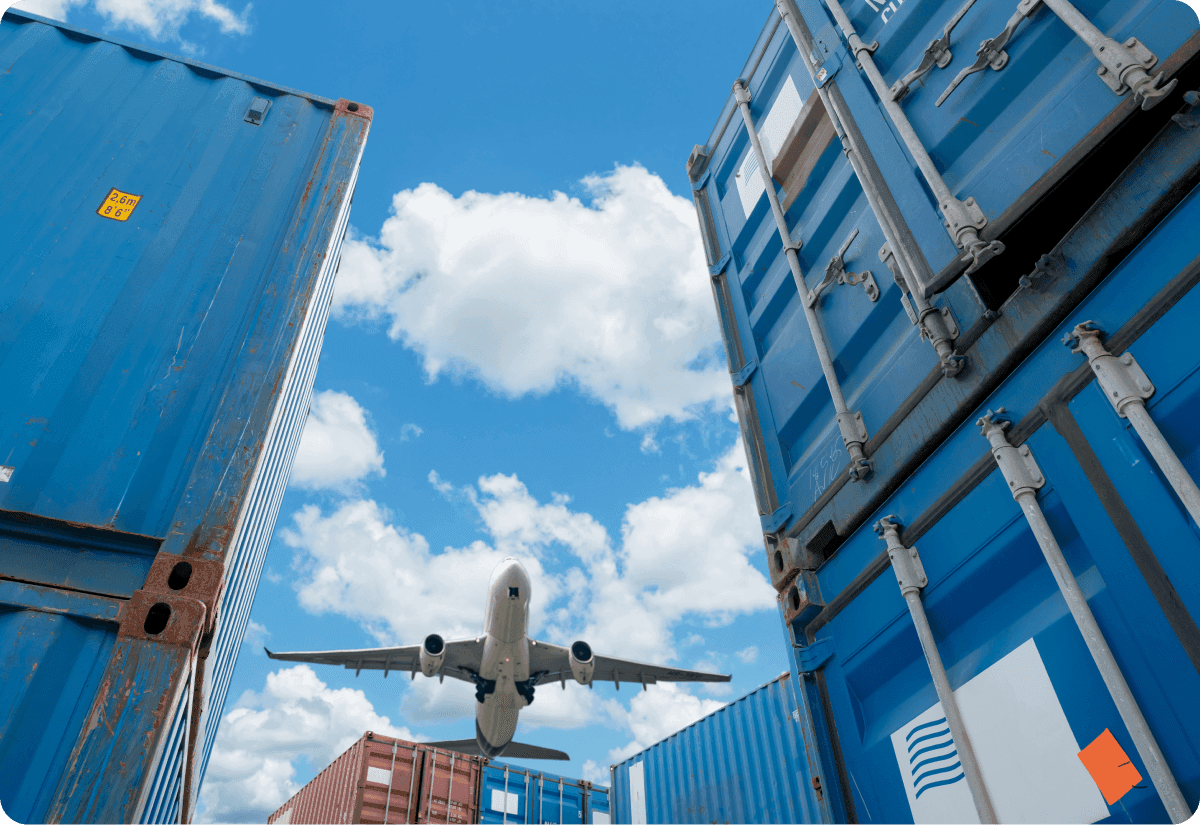Have you ever thought about how much your transportation management strategy impacts your business? We all know late deliveries frustrate customers, but they also cost money. Then there are rising fuel prices and inefficient routes that are making it worse.
Now, here’s the thing—75% of companies are planning to up their investments in transportation management tech in the next two years. Why? Because it’s becoming necessary to stay competitive.
So, how do you build a transportation strategy that not only avoids the chaos but actually helps your business grow? Continue reading to learn practical steps you can take to save money and improve efficiency in your transportation management.
Developing a Strong Transportation Management Strategy
A well-structured transport plan is crucial for ensuring the smooth flow of goods and minimizing disruptions. Businesses need to optimize their freight routes and carrier selections to reduce costs and improve delivery performance. Leveraging management software helps monitor real-time updates, analyze historical data, and adjust operations accordingly. By focusing on improving visibility and efficiency, companies can enhance customer satisfaction and streamline their overall logistics process.
Optimizing Transportation for Cost and Efficiency
High costs and inefficiencies are persistent problems in logistics. To address these, optimizing transport operations becomes a necessity. The goal isn’t just to cut costs but to create smoother processes that improve overall performance and drive business growth.
Here are the steps to optimizing transportation for cost and efficiency, along with key points to consider for each step.
Step 1: Analyze Historical Data
Use analytics to evaluate past shipments. By identifying trends and bottlenecks, you can uncover areas that need improvement and make informed decisions.
Key Points to Consider:
- Freight Analysis: Identify peak shipping times and underutilized capacity.
- Performance Metrics: Track delivery times, fuel consumption, and overall cost per shipment.
- Bottleneck Identification: Find where delays commonly occur, such as at loading docks or during transit.
Step 2: Prioritize Route Optimization
Software solutions can help optimize routes by analyzing traffic, road conditions, and distance. Reducing unnecessary travel minimizes fuel consumption and improves on-time delivery.
Key Points to Consider:
- Traffic Patterns: Consider historical traffic and congestion data.
- Delivery Windows: Optimize routes to align with delivery windows and customer availability.
- Fuel Efficiency: Shorter and more direct routes reduce fuel usage and emissions.
Step 3: Utilize Effective Freight Management
Collaborating with multiple shippers or freight providers gives your operations more flexibility. It ensures better handling of cargo, faster response times, and reduced costs.
Key Points to Consider:
- Carrier Flexibility: Work with multiple carriers to avoid delays from single-provider constraints.
- Freight Consolidation: Combine shipments to reduce the number of trips and lower transportation costs.
- Cargo Handling: Use advanced cargo handling techniques to minimize damage and reduce processing time.
Step 4: Leverage Warehouse Management Systems
A well-organized warehouse ensures faster movement of goods in and out, reducing downtime and delays. This streamlines the flow of goods and improves efficiency.
Key Points to Consider:
- Inventory Management: Keep inventory levels optimal to avoid overstocking or stockouts.
- Automated Systems: Implement WMS to track goods in real time and optimize storage layouts.
- Cross-Docking: Transfer goods directly from inbound to outbound trucks, reducing storage time.
Step 5: Implement Sustainable Practices
Sustainability doesn’t just save the planet—it can also save your business money. Fuel-efficient trucks, fewer trips, and eco-friendly practices contribute to long-term cost savings and operational efficiency.
Key Points to Consider:
- Fuel-Efficient Vehicles: Invest in trucks with better fuel efficiency or hybrid vehicles.
- Route Planning for Sustainability: Minimize unnecessary trips and reduce emissions with route optimization.
Packaging: Use eco-friendly materials and reduce packaging waste to lower shipping weight and costs.
With sustainable practices in place, the final mile—delivery management—becomes the key to customer delight and cost control in your software delivery management strategy.
Key Components of Transportation Management
Once your transport and warehouse are optimized, your software delivery management strategy needs a solid delivery framework to ensure every package arrives on time.
The Importance of Transportation Management
Effective transportation management in a software delivery management strategy means each package moves from your facility to the customer without delays or damage. Getting this right cuts failed deliveries, lowers support costs, and builds trust.
Importance of Driver Scheduling in Delivery Management
In a robust software delivery management strategy, optimized driver schedules align shifts, breaks, and routes to demand. Balanced shifts prevent overtime expenses and late runs, keeping deliveries punctual and labor costs under control.
Optimizing Dispatch Management in Delivery Operations
A smart software delivery management strategy uses dispatch systems that match orders to available drivers in real time. Minimizing empty miles and grouping stops efficiently cuts fuel use and speeds up delivery windows.
How Delivery Tracking Links Benefit Customers
Including live tracking links in your software delivery management strategy lets customers monitor progress themselves. This transparency reduces support inquiries and boosts satisfaction.
Enhancing the Delivery Experience Through Effective Customer Communication
Proactive SMS or email updates, precise delivery windows, and post-delivery surveys are all part of a modern software delivery management strategy. Clear communication turns routine drop-offs into positive brand interactions.
With these building blocks in place, your software delivery management strategy will deliver real-world impact on your operations.
Benefits & Essential Features of Delivery Management
When your delivery system works well within a software delivery management strategy, you’ll see clear, measurable improvements—faster drop-offs, fewer mistakes, lower costs, and happier customers. To achieve this, include features like live vehicle tracking, automatic route updates, easy proof-of-delivery, and simple performance reports.
Main Benefits of Delivery Management
- Faster Deliveries: Streamlined processes cut transit times.
- Fewer Failed Drops: Accurate scheduling and clear communication reduce missed deliveries.
- Lower Support Costs: Greater visibility and automation slash customer service workloads.
- Higher Repeat Business: Consistent, reliable delivery boosts loyalty and referrals.
Essential Features for Success
- Real-Time Driver Location: Know exactly where every vehicle is at all times.
- Dynamic Rerouting: Automatically adjust routes for traffic or last-minute orders.
- Proof-of-Delivery Capture: Instant photo or signature records confirm successful drops.
- Performance Dashboards: Track KPIs like on-time rate, cost per delivery, and driver efficiency in one view.
Integrating these components and features into your transportation plans completes your software delivery management strategy, turning delivery from a liability into a competitive advantage.
The Role of Transportation Design in Supply Chains
Designing an effective transportation system is crucial for keeping your supply chain running smoothly. Proper transportation design focuses on optimizing how goods move from one point to another, helping businesses cut costs and improve efficiency. Here are the essential elements to consider:
Route Optimization
Planning and optimizing routes reduces travel time and fuel consumption. By analyzing traffic patterns, weather conditions, and delivery windows, you can design routes that minimize delays and lower operating costs. This improves delivery reliability and reduces overall fuel use, making the process more eco-friendly and cost-effective.
Fleet Management
An efficiently managed fleet ensures that the right mix of vehicles is available for different types of deliveries. Whether it’s long-haul trucks or smaller local delivery vehicles, managing vehicle usage based on demand maximizes fleet capacity, reduces idle time, and lowers maintenance costs. This keeps operations running smoothly and avoids unnecessary expenses from underused resources.
Real-Time Monitoring and Visibility
Tracking cargo in real time is crucial for addressing any disruptions as they occur. By using GPS tracking and IoT technologies, businesses gain full visibility into the movement of goods. This allows for better decision-making and quick responses to issues like traffic jams or weather-related delays, ensuring deliveries are on schedule.
Warehouse Integration
Coordinating transportation and warehouse operations ensures goods move efficiently from storage to shipment. This reduces dwell time and improves the flow of inventory. Whether it’s inbound or outbound logistics, proper synchronization between warehouses and transport systems minimizes bottlenecks, leading to faster order fulfillment and fewer delays.
Leveraging Third-Party Logistics Providers (3PLs)
Outsourcing transportation to third-party providers offers flexibility, especially during peak seasons or periods of high demand. These providers bring expertise and scalability to handle sudden changes in shipping volumes, helping businesses manage transportation costs while maintaining service quality.
Benefits of a Transportation Management Strategy
A Transportation Management System (TMS) is a powerful tool for streamlining the movement of goods, improving efficiency, and cutting costs. By automating tasks like route planning, real-time tracking, and freight management, businesses can gain greater visibility into their logistics operations. Implementing a TMS allows for better decision-making, reduces manual errors, and enhances overall supply chain performance.
Below is a comparison of Transportation Management Systems versus manual or outdated methods:
| Aspect | Using a TMS | Without a TMS |
| Route Optimization | Automatically adjusts routes for traffic and weather, saving time and fuel | Manual planning often leads to inefficiencies and longer delivery times |
| Visibility | Real-time tracking provides full visibility of shipments | Limited or no visibility into shipment status |
| Cost Management | Helps reduce fuel consumption and optimize freight costs | Higher transportation expenses due to inefficient routes and lack of oversight |
| Customer Satisfaction | Quicker, more reliable deliveries improve customer experience | Delays and poor tracking result in lower customer satisfaction |
| Scalability | Easily adapts to growing business needs | Harder to manage as the business and shipment volume grow |
The benefits of a TMS make it clear: increased efficiency, cost savings, and enhanced customer satisfaction are within reach.
Improve your Supply Chain Efficiency—Partner with SCS
Achieving optimized supply chain efficiency is key to staying competitive in today’s market. At Supply Chain Solutions, we understand that every step in the process—from transportation to materials management—needs to be as lean and effective as possible. Our team of experts will help streamline your operations, minimize waste, and reduce costs, all while boosting performance.
Ready to set your transportation management strategy and see improvements in your supply chain? Contact Supply Chain Solutions today to get started!

